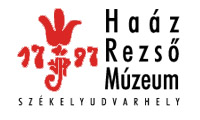Kovács Petronella (szerk.): Isis - Erdélyi magyar restaurátor füzetek 1. (Székelyudvarhely, 2001)
T. Bruder Katalin: Kerámiarestaurálás I.
Katalin T. BRUDER Restoration - ceramics I. In order to learn the restoration of ceramics, the basic properties of the clay types and the production technologies must be known. Clay minerals are divided into three main groups: kaolinite, illite and montmorillonite. Regarding their practical use they are divided into the following groups: kaolinites, combustible and incombustible clays, bentonite clays. Ceramics can be moulded with different methods: band raising, turned on a wheel, moulding in a model, free moulding, casting and pressing. After drying, baking can be made in ovens of various types on different temperatures: pottery on 800-1000 °C, stoneware, china ware, clinker and hard tile on 110- 1300 °C, chamotte on 1300-1500 °C. Most of the finds unearthed by excavations are pottery fragments. They are usually washed in water on spot before the water soluble salts transform into calcium and magnesium carbonates, which do not dissolve in water. Weathered, poorly preserved, fissured ceramics have to be transported into the restorer's workshop together with the earth around it in an appropriate wrapping, unless sufficient conditions are provided for conservation at the site of the excavation. Depending on the condition of the object, fixing can be made with wrapping gauze around it, or using chemicals: 10 % Paraloid B72 diluted in toluol or 3-5 % poly(vinylbutirate) diluted in alcohol. The object can also be removed after being fixed with a plaster bandage or polyurethane foam in situ. After sufficient cleaning and the removal of the earth, the inside of the vessel can be solidified with solutions of Paraloid B72 or PVB. PVB solution is suggested for glueing since it gives an indistinctive trace of glueing, it is thermoplastic (which means that glueing can be readjusted) and cheap. Diluted Araldite varieties can be applied to glue china ware and fine ceramics. Completions are usually made from coloured plaster. Pulverised paints deteriorate binding properties, which can be neutralised with the addition of dental hard plaster. Additives as plasticine or dental wax can be used for completions. When the plaster is mounted from the edges inwards, the development of air bubbles on the joining surfaces can be evaded. Another study will deal with the solutions of more complicated problems as the completion of plastic, open-work tiles, glazed wares and china wares and reconstruction. Katalin T. Bruder Archaeological and applied art restorer Deputy head of department of conservation Magyar Nemzeti Múzeum 98
